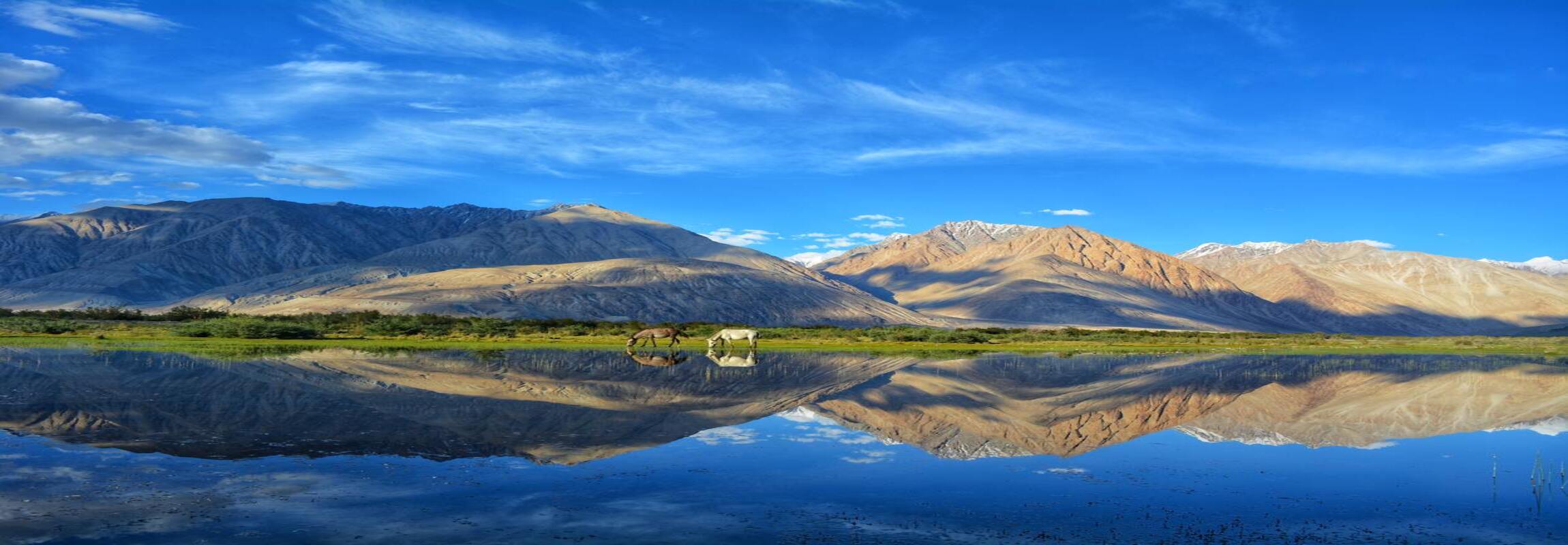10 Must-Visit Buddhist Monasteries in Leh Ladakh
Buddhist religion and culture are popular in the Leh Ladakh region. Since the majority of the population is Buddhist, you can find many monasteries there, some of them are ancient and very much respected.
In Ladakh, Buddha and his incarnations, i.e., Bodhisatva are worshipped. The concepts and traditions of the Buddhist religion are very much spiritual in nature.
Buddhist Monasteries In Leh Ladakh are the lighthouses, the energy centers that spread the rays of spirituality and religion to the world. Here are the 10 most visited Buddhist Monasteries in the Leh Ladakh region. Make sure they are part of your journey when you plan the Leh Ladakh Road Trip.
Hemis Monastery
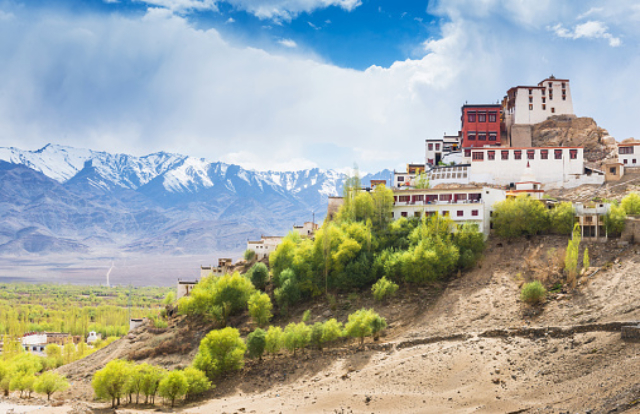
This monastery is a well-known and important place for Buddhists. Once every 12 years, the Hemis Festival is held. During this two-day festival, the birth anniversary of Guru Padmasambhava is celebrated.
Hemis Monastery is around 400 years old and it is under the patronage of the royal family. You can see ancient relics there which makes it a famous attraction for Leh Ladakh trip. The monastery is around 40 kilometers away from Leh district and it is accessible by road in just one and half hours
Alchi Monastery
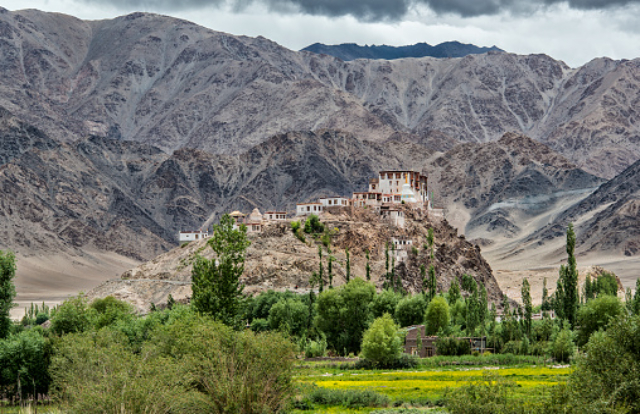
If you ask for the famous Buddhist Monasteries In Leh Ladakh, then Alchi Monastery will be recommended by people because of its old painting and murals.
Alchi Monastery is actually a complex of various temples from the 11th and 13th centuries. They are intricately decorated. The incredible woodwork displays the style and richness of art in Ladakh. The paintings displayed in the monastery are famous worldwide. Located around 70 kilometers from Ladakh, you can reach there in two hours.
Thiksey Monastery
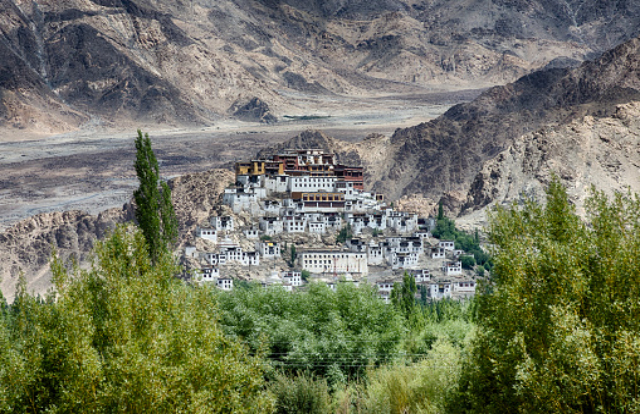
Thiksey Monastery is the oldest and the largest Ladakh Monastery in the region. It is more than 500 years old, and it is the chief pilgrim site of the Gelugpa sect. It greatly resembles the Potala Palace in Lhasa, and its size and grandeur are amazing.
There is a huge status of 15-meter-high Maitreya Buddha, which is placed in a double-storied shrine room. It is known as Chamba or Future Buddha. It was placed by His Holiness Dalai Lama in the 1980s.
Thiksey Monastery has a rich collection of Buddhist statues, scripts, stupas, swords, Thangka paintings, and so on. Situated 19 kilometers from Ladakh, the monastery can be reached by road.
Basgo Monastery
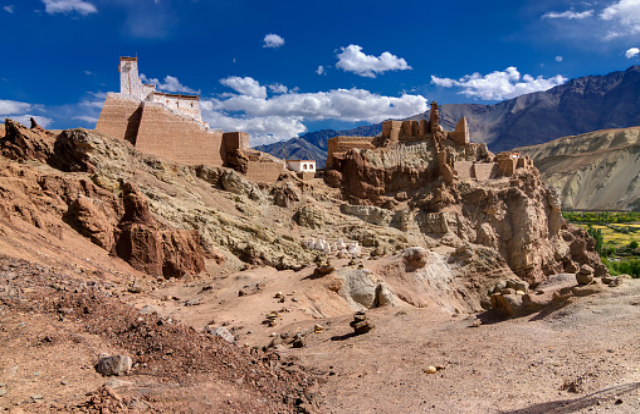
This monastery was originally a fortress built in the 15th century during the reign of King Rinchen Namgyal. It was converted into a monastery. Basgo was the capital of Ladakh during old times.
You can see beautiful murals of the 16th century in the monastery. It is located at a picturesque location where you can see a breathtaking view of the Himalayan and Karakoram mountains. You can reach this monastery in one hour. It is located at 43 kilometers from Leh. This monastery is a favorite place when people plan a trip to Leh Ladakh With Kargil & Srinagar.
Chemrey Monastery
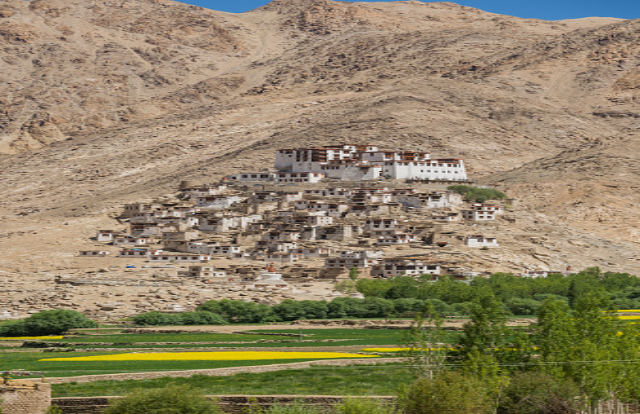
Chemry is one of the mid-17th century Buddhist Monasteries In Leh Ladakh founded by Lama Stags Ang Raspa. It was a palace turned into a monastery. The monastery is adorned with paintings, frescoes, and murals. There is a museum where religious and traditional artifacts are displayed. On the 28 and 29th months of the 9th month of the Tibetan calendar. It is located at a distance of 43 kilometers from Leh. You can reach it by road in one hour.
Rizong Monastery
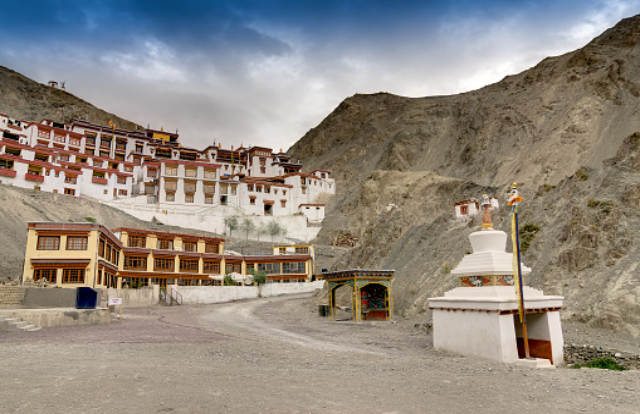
Rizong Monastery is a great place for tourists and pilgrims, where you can see the glorious Indus Valley. Monks spend their life in this monastery. According to the legends, Guru Padmasambhava meditated at this place in total isolation. Therefore, this monastery is religiously significant.
The Rizong Monastery features a Chomoling or a nunnery. Females used to stay there and worship. The monastery is located at a distance of 70 kilometers from Leh. One can reach it in about one and half hours. It is rated among the most revered Buddhist Monasteries In Leh Ladakh.
Diskit Monastery

Diskit Monastery is located in the Nubra Valley. The initial monastery was built around the same time as Thiksey Monestary. It was ransacked and destroyed by Mongol invaders. The renovated Buddhist Monastery In Ladakh is much bigger and built like a castle to ward off any invaders.
The monastery is surrounded by a single-storied varanda. It is divided into three parts. The first one has historical importance. The second portion has a new assembly hall and noble rooms. The third portion is the oldest one, where you can see a prayer room.
Lamayuru Monastery
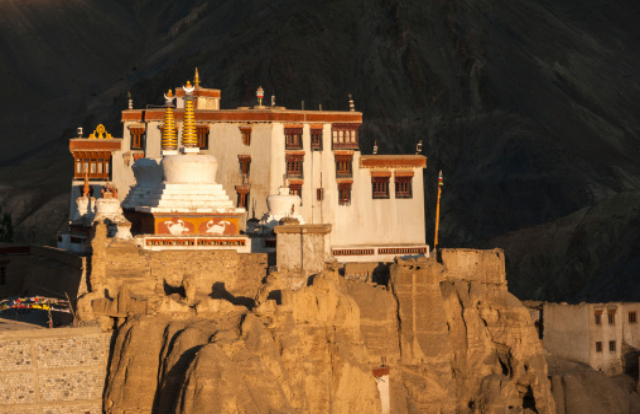
The old name of Lamayuru Monastery is Yungdrung. Before the advent of the Buddhist religion, this place was the main center of the Bon Religion. The famous Rinchen Zangpo built this temple that still survives. The remains of four other rooms can also be seen. The landscape around this monastery is called the “moonland”. It resembles a lunar landscape. There is a small cave where Naropa meditated. It was the main prayer hall. It is one of the main Buddhist Monasteries In Leh Ladakh.
Likir Monastery
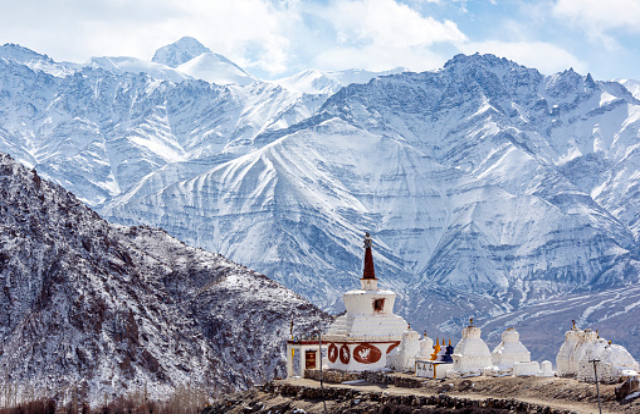
It was founded as a settlement of monks in the 11th century by Lama Duwang Chosje under the patronage of King Lhanchen Gyalpo. This monastery is located on a small hill in a narrow valley. The current head of this monastery is Ngari Rinponchey who is the brother of the Dalai Lama. There is a 22-meters tall outdoor status of Lord Buddha. It is visible from miles away. You can see a rich collection of manuscripts and sculptures. Every year, on the 27th and 29th of the 12th month of the Tibetan Calendar, the annual Dosmochey festival is held.
Namgyal Tsemo Fort and Gompa
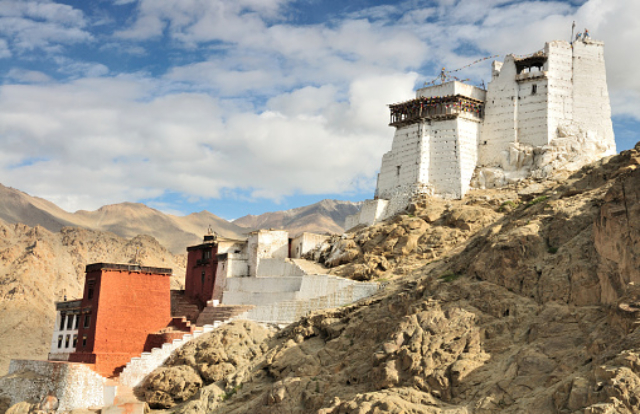
This fort and Gompa were built in the mid-16th century by King Tashi Namgyal to commemorate the victory over the invading Turks. The history of this Leh Ladakh Monastery is closely associated with the Namgyal Dynasty. The complex has a three-story-high statue of Maitreya. There is a statue of Avloiteshwara and the deity PAldan Lhamo, which is built above the skulls of the Turks.


